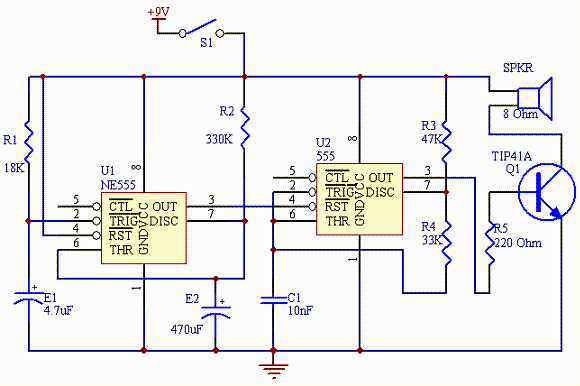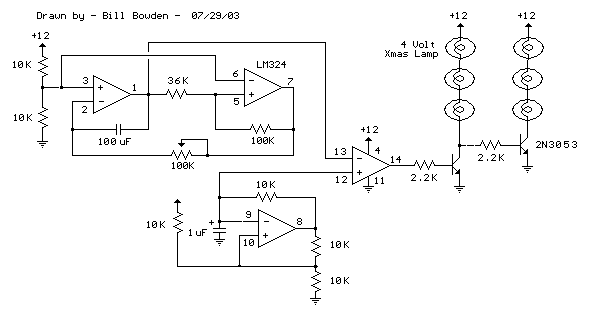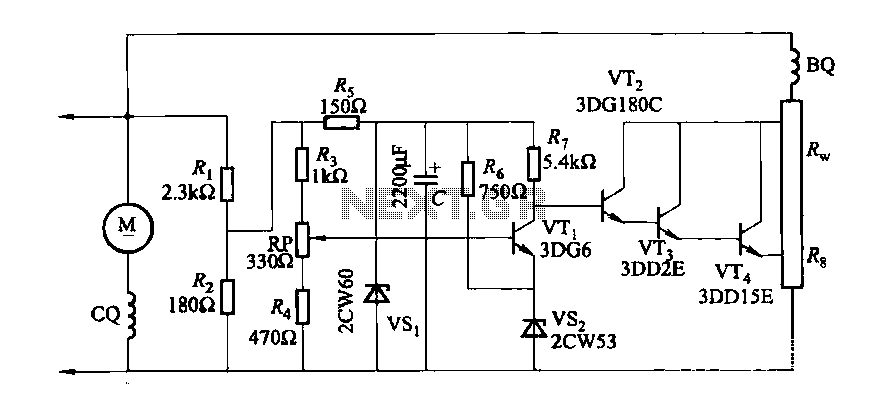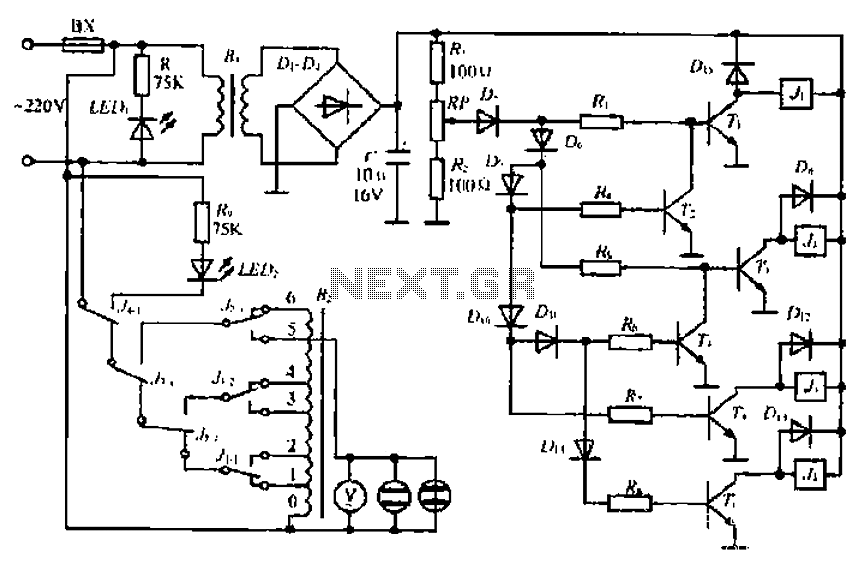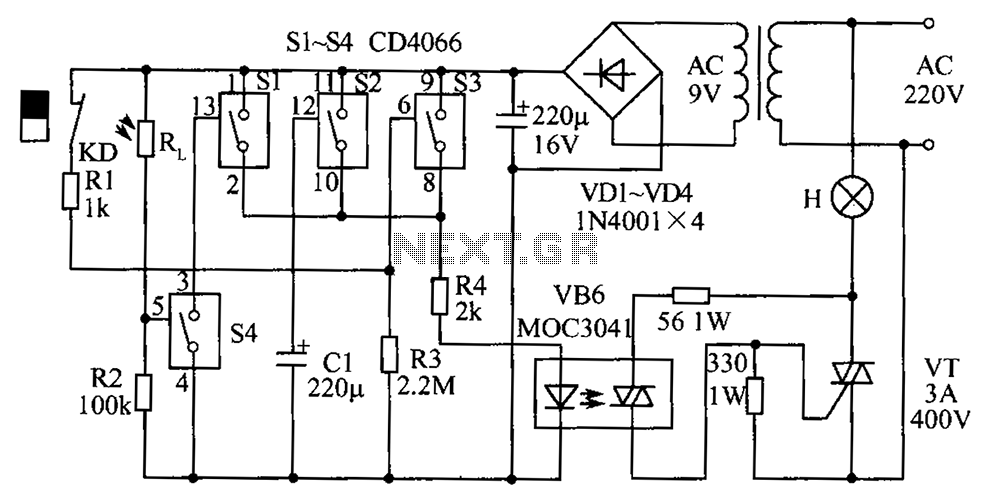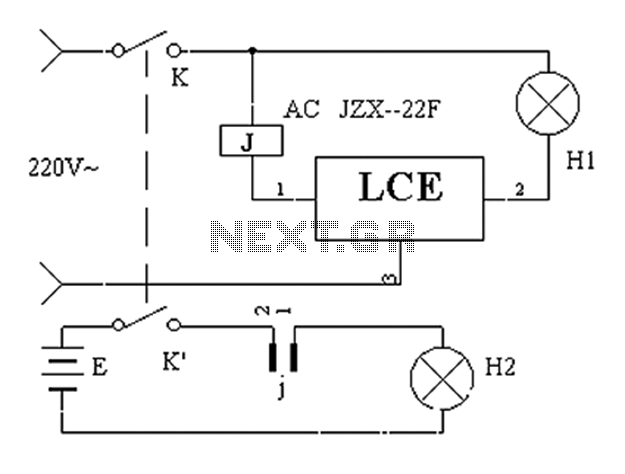
Auto plant Irrigation AT89C2051
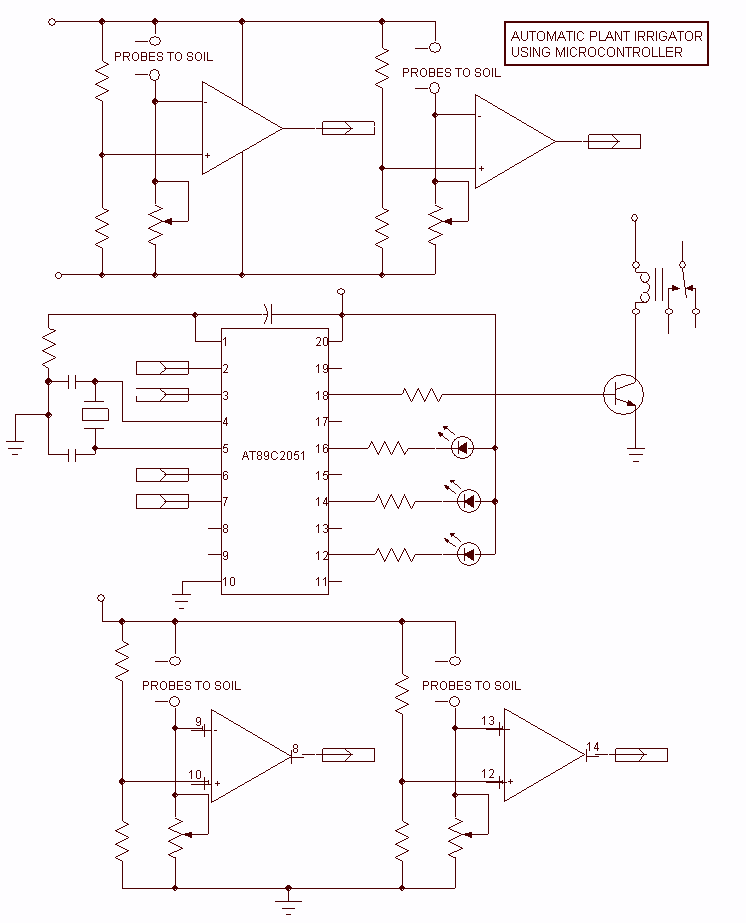
The Project presented here waters your plants regularly when you are out for vocation. The circuit comprises sensor parts built using op-amp IC LM324. Op-amps are configured here as a comparator. Two stiff copper wires are inserted in the soil to sense the whether the Soil is wet or dry. More: The Microcontroller was used to control the whole system it monitors the sensors and when more than two sensors sense the dry condition then the microcontroller will switch on the motor and it will switch off the motor when all the sensors are in wet.
The project is designed as an automated plant watering system, ideal for maintaining plant health during periods of absence. The core of the system relies on an LM324 operational amplifier (op-amp) configured in a comparator mode to detect soil moisture levels.
Two copper electrodes are inserted into the soil, functioning as moisture sensors. These electrodes measure the electrical conductivity of the soil, which varies depending on the moisture content. When the soil is dry, the resistance between the electrodes increases, leading to a lower conductivity signal that the op-amp can detect. Conversely, when the soil is wet, the conductivity increases, triggering a different response from the op-amp.
The output from the op-amps is fed into a microcontroller, which processes the signals from multiple moisture sensors. The microcontroller is programmed to monitor the readings from these sensors continuously. If more than two sensors indicate a dry condition, the microcontroller activates a water pump or motor to irrigate the plants. This is typically achieved through a relay module that interfaces between the microcontroller and the motor, allowing for safe control of higher voltage and current levels.
Once the soil moisture levels return to an acceptable range, as indicated by the sensors detecting wet conditions, the microcontroller will deactivate the motor, stopping the water flow. This feedback loop ensures that the plants receive adequate watering without over-saturation, promoting healthy growth and conserving water.
Overall, the system's integration of op-amps for sensing, alongside a microcontroller for decision-making and motor control, creates an efficient and effective automated irrigation solution.The Project presented here waters your plants regularly when you are out for vocation. The circuit comprises sensor parts built using op-amp IC LM324. Op-amps are configured here as a comparator. Two stiff copper wires are inserted in the soil to sense the whether the Soil is wet or dry. The Microcontroller was used to control the whole system it monitors the sensors and when more than two sensors sense the dry condition then the microcontroller will switch on the motor and it will switch off the motor when all the sensors are in wet. The 🔗 External reference
The project is designed as an automated plant watering system, ideal for maintaining plant health during periods of absence. The core of the system relies on an LM324 operational amplifier (op-amp) configured in a comparator mode to detect soil moisture levels.
Two copper electrodes are inserted into the soil, functioning as moisture sensors. These electrodes measure the electrical conductivity of the soil, which varies depending on the moisture content. When the soil is dry, the resistance between the electrodes increases, leading to a lower conductivity signal that the op-amp can detect. Conversely, when the soil is wet, the conductivity increases, triggering a different response from the op-amp.
The output from the op-amps is fed into a microcontroller, which processes the signals from multiple moisture sensors. The microcontroller is programmed to monitor the readings from these sensors continuously. If more than two sensors indicate a dry condition, the microcontroller activates a water pump or motor to irrigate the plants. This is typically achieved through a relay module that interfaces between the microcontroller and the motor, allowing for safe control of higher voltage and current levels.
Once the soil moisture levels return to an acceptable range, as indicated by the sensors detecting wet conditions, the microcontroller will deactivate the motor, stopping the water flow. This feedback loop ensures that the plants receive adequate watering without over-saturation, promoting healthy growth and conserving water.
Overall, the system's integration of op-amps for sensing, alongside a microcontroller for decision-making and motor control, creates an efficient and effective automated irrigation solution.The Project presented here waters your plants regularly when you are out for vocation. The circuit comprises sensor parts built using op-amp IC LM324. Op-amps are configured here as a comparator. Two stiff copper wires are inserted in the soil to sense the whether the Soil is wet or dry. The Microcontroller was used to control the whole system it monitors the sensors and when more than two sensors sense the dry condition then the microcontroller will switch on the motor and it will switch off the motor when all the sensors are in wet. The 🔗 External reference
